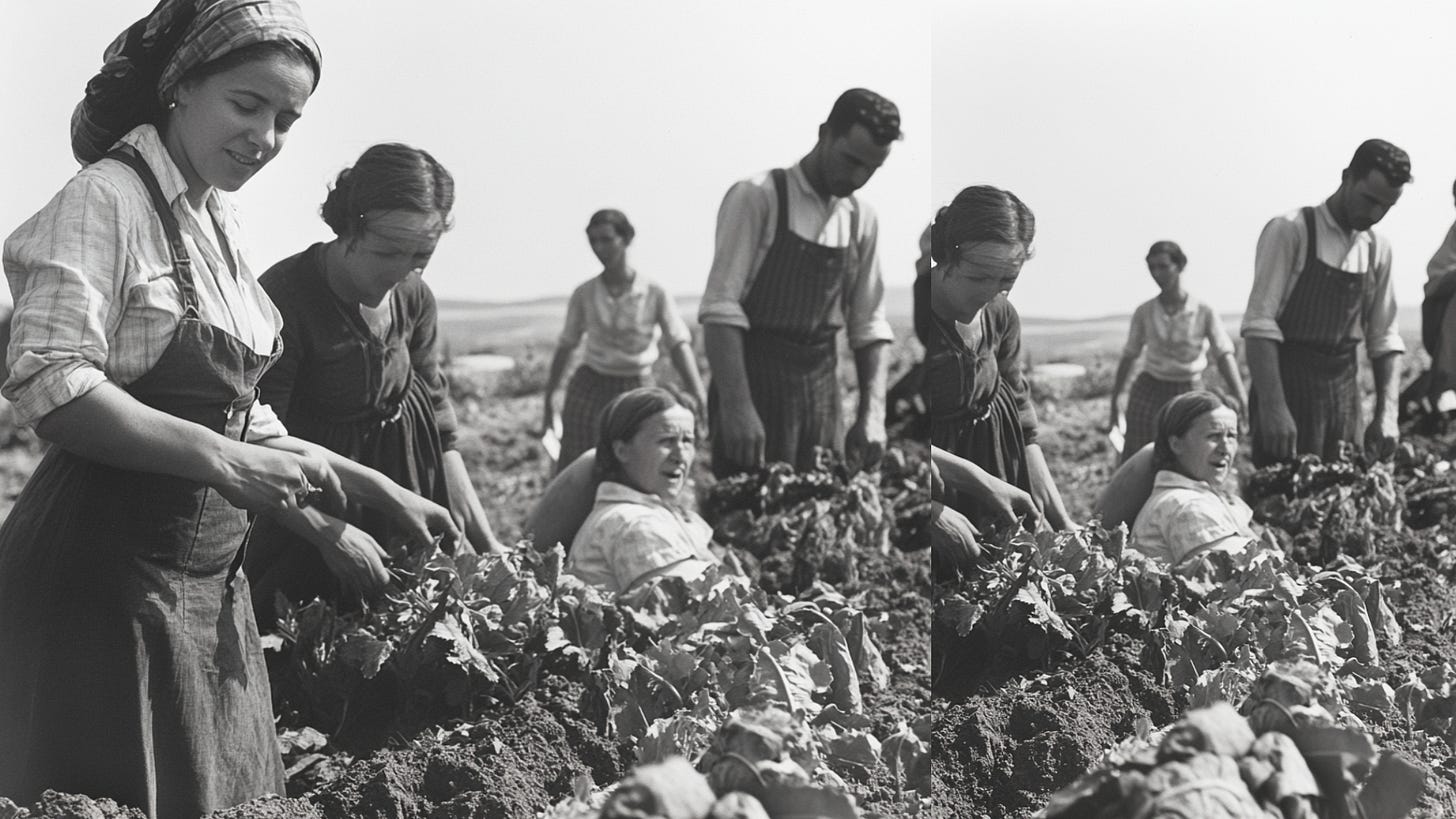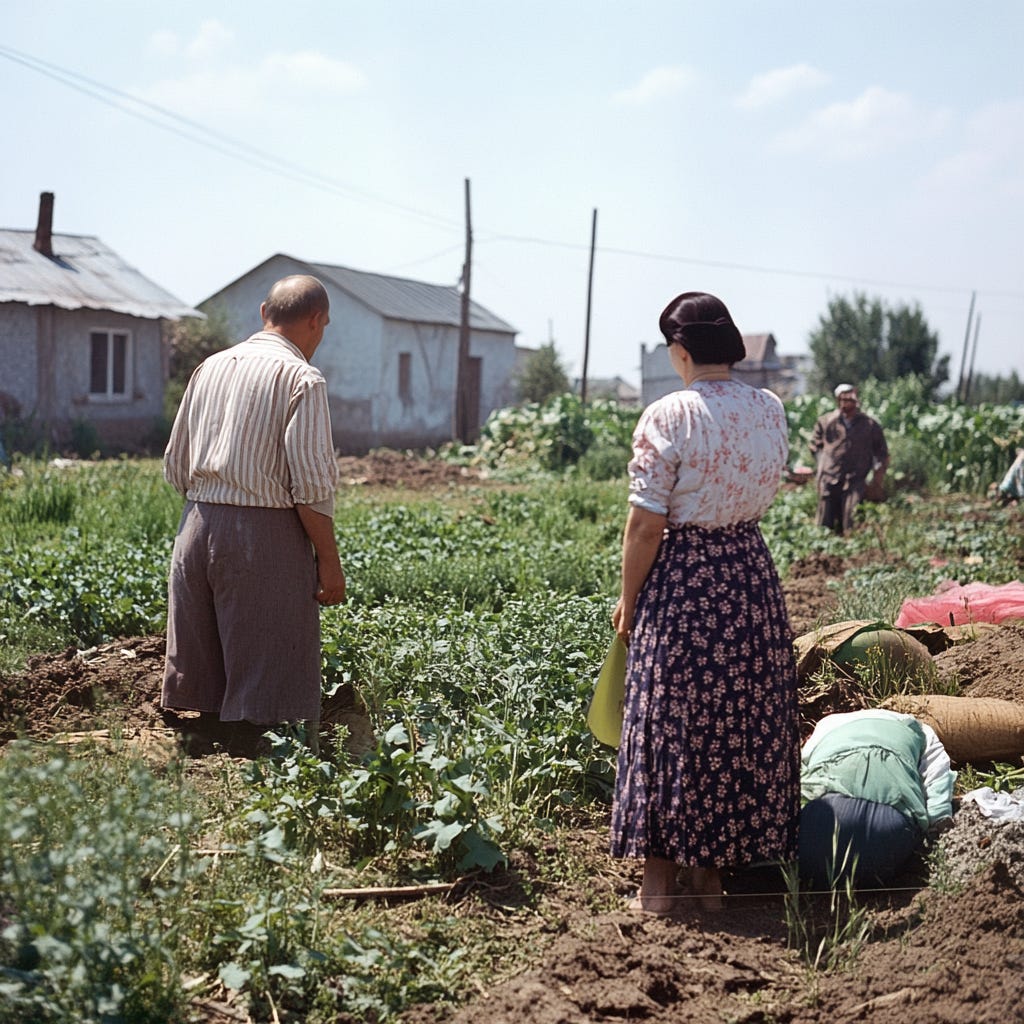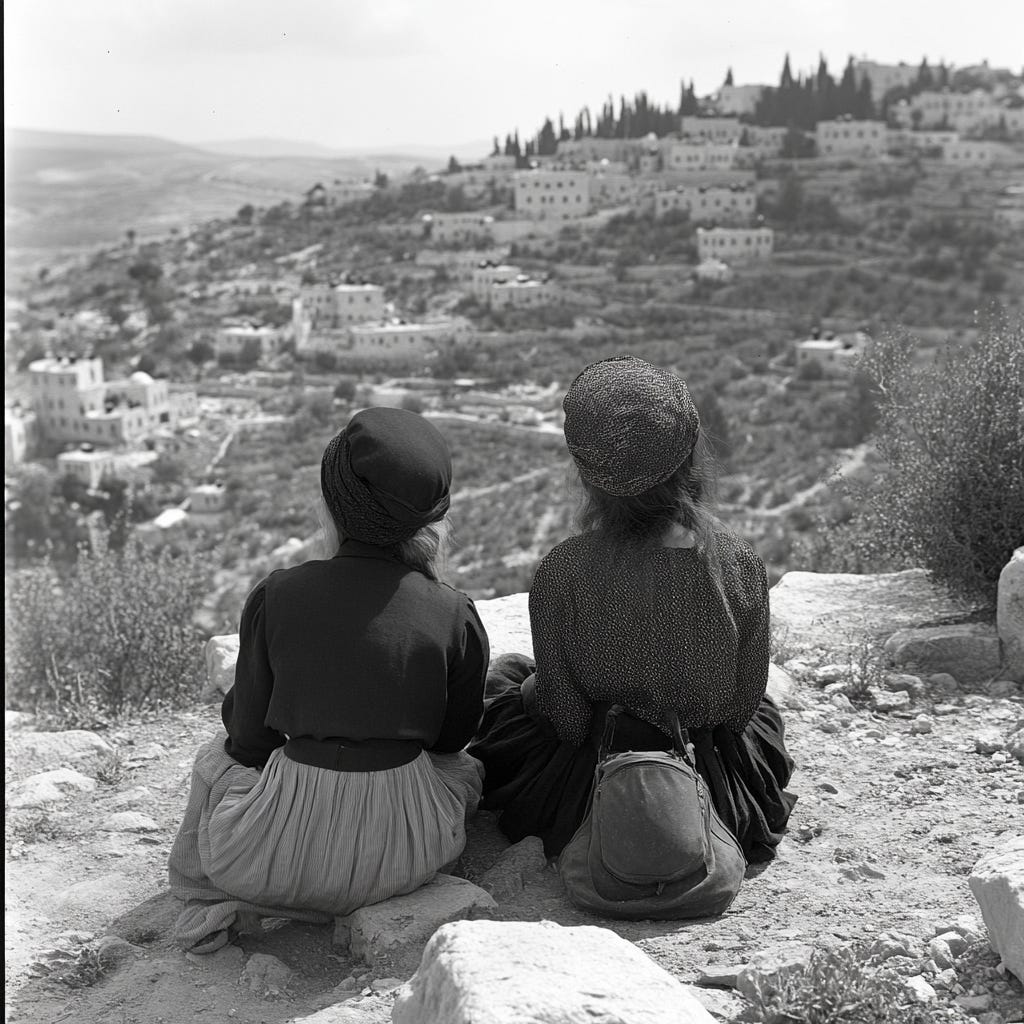"Everything I Had, I Left Behind. There is No Going Back."
A Story Unfolding Across Timelines.
This is an extra unscheduled guest post from the JPF family by
. Subscribe to her Substack, for more of her informative writing.All future stories written by Reuben Salsa (every Thursday, 9 am Auckland time) will be for paid subscribers only. Guest posts will remain free and posted every Sunday (9 am Auckland time).
Support my coffee addiction and illusional writing career! Pay for a subscription today! Guaranteed weirdness!
For more articles by Jewish authors, subscribe to the JPF on Medium (click on the image below).
"Everything I Had, I Left Behind. There is No Going Back."
Flashback.
First Aliyah, 1881-1903
In the late 20th century, most residents of the land of Israel, also known as the Palestine area in the Ottoman Empire, lived in big cities like Jerusalem, Jaffa, Haifa, and Safed. In contrast, the local farmers, also known as peasants, lived in small countries near the land they worked on. During the 600 years of Ottoman Empire rule, most residences were built in the main cities. As a result, and especially upon their arrival, Jewish immigrants found housing solutions in the populated urban areas. However, the increase in population led to a housing shortage, which emphasized the need to find additional housing solutions for many new immigrants.
Urban Planning
Between 1881 and 1903, the first Aliyah period, the urban landscape of the land of Israel was a mix of traditional building styles, and European architectural styles began to emerge. Most buildings were low-rise, made from local stone, and featured central courtyards for shade and ventilation. Yet, Western influences started to appear during that time, with occasional taller buildings and more oversized windows. The arrival of Jewish immigrants also brought new neighborhoods that showcased more modern building techniques.
This period was a transitional phase in urban architecture, combining local building traditions with Western styles. While traditional design practices still dominated, architects and planners laid the foundations for a more diverse and dynamic urban environment, setting the stage for future development.
Dreams Come True
The Russian refugees' biggest dream, and the main reason for leaving the Russian Empire, was to own their agricultural land, which was forbidden for them when they lived there. The new immigrants' desire to become farmers and landlords led them to develop innovative solutions to fulfill their desires and solve their housing problems, leading them to create new forms of agricultural settlements.
Global political and economic changes that began during the 19th century in Europe, Russia, and the United States also influenced the Ottoman Empire, leading it to implement new reforms to improve the peasants' economic status. However, both peasants and landlords resisted these reforms, and each class resisted them for different reasons. The aristocrats who owned most of the land chose a course of action that benefited their wealth. The rise in taxation for the Ottoman authorities and the Baksheesh, the Arabic term for a bribe, to the Ottoman officials, which was customary throughout the entire empire, led them to sell their land when the opportunity knocked on their door.
As a result, landowners began to sell their land to any sellers interested in paying for it, especially the lands covered with swamps, which the local peasants didn't know to utilize for agriculture. While selling the lands benefited the wealth of the landlords, it severely hurt the economic and mental health of the Palestinian Arab peasants. After hundreds of years of working the same way, the landlords betrayed the peasants and sold their land without giving them any notice or helping them find an alternative source of income.
Europeans and Russian Jewish refugees who arrived in the land of Israel area, also known as the Palestine region in the Ottoman Empire, bought these lands and started to develop settlements and economy in agriculture. When the Palestinian Arab peasants who still lived near the land they worked on saw the new landlords initiate agricultural activity, while they were left with nothing, they blamed the Jewish buyers of the land instead of the wealthy Muslims who sold it.
Since the Jewish farmers became the Palestinian Arab peasant's neighbors, they saw them every day, leading them to aim their resentment and revenge activities toward the new landlords, the Jews. After all, who else can they blame for their unfortunate circumstances? The Muslim aristocrats never lived in this region; they just owned the land, so the only thing left for local Palestinian Arab peasants to do was to hate and take revenge on the new owners of the land.

Moshava - New Form of Settelment
Establishing a new settlement is like founding a new business, with many more obstacles, including the community life of the people living there. These initiatives are very difficult since they require group collaboration, financial investments, knowledge, and especially mental strength to handle all known and unknown obstacles that arise along the way. So, when housing the Jewish refugees became an evident problem, the new immigrants thought outside the box and found innovative solutions.
The Jewish Russian refugees left nothing behind, so they were willing to work hard to build a new future. Wealthy European Jews who were familiar with the laws of the Ottoman Empire knew the legal meaning of capitulation, and by using their knowledge, they purchased land for Jews who agreed to settle on it.
Thanks to wealthy Jewish purchasers of land, the Russian immigrants established, for the first time, independent urban and extensive agricultural settlements beyond the main cities in the Land of Israel. The first type of agricultural settlement was Moshava, where all the land and property were privately owned. The economy of the early moshavot (plural of Moshava) was based on agriculture and resembled the grain-growing villages of Eastern Europe in layout.
How to Plan Architecturally New Settlements?
The architecture of the early Jewish settlements during the First and Second Aliyah periods was a unique mix of functionality and cultural identity. These agricultural communities aimed to create a new Jewish homeland, with buildings made from local materials like stone, mud, wood, and palm leaves to reduce costs and connect the settlers to their surroundings. The style was eclectic, inspired by European rural architecture, local Arab architecture, and the emerging International Style. Structures often featured large windows for natural ventilation, spacious verandas, and functional layouts suited for agricultural life.
As time passed, the architecture evolved to reflect changes in economic conditions, cultural influences, and architectural trends. Early settlements focused on basic functionality, while later included more elaborate and ornate elements. This evolving architecture significantly shaped the identity of the Jewish community in the land of Israel and remains a subject of interest for historians and architects.
However, this pioneering settlement enterprise of the first Aliyah wave, known as the first moshavot, was not an economic success story. Harsh climate and soil conditions, the settlers' lack of agricultural experience in these situations, a failed service system, and the general hostility of the Ottoman authorities all harmed the colonies and endangered their existence.
Who will save them? The savior, Baron Abraham Edmond Benjamin James de Rothschild.












Part 2???